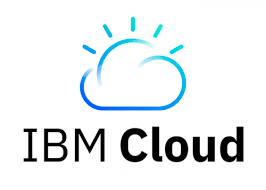IT Infrastructure
IT Infrastructure refers to the collection of physical and virtual resources and services that support the operation of an organization’s information technology (IT) environment. It encompasses the hardware, software, network resources, and services required for the functioning and management of enterprise IT systems. A well-structured IT infrastructure is essential for the smooth operation of a business, enabling efficient management of data, applications, security, and communication.

Why Choose Our Cloud Solutions?
We modernize infrastructure, streamline outdated processes, and optimize cloud assets to build future-ready ecosystems.
Technology We Use

AWS

IBM Cloud

Google Cloud

Microsoft Azure
Components of IT Infrastructure
IT infrastructure can be divided into several key components, each playing a critical role in the overall setup of an organization’s technology ecosystem.
Hardware
Hardware is the physical technology that supports the storage, processing, and transmission of data. Servers Powerful computers that run services, manage applications, store data, and process requests.
Software
Software forms the second major pillar of IT infrastructure. It includes the operating systems, applications, databases, and other software that allow users and IT systems to function. Examples: Windows Server, Linux, macOS, Unix.
Security Infrastructure
Security is one of the most crucial elements of IT infrastructure, ensuring data protection, compliance, and safeguarding systems from external and internal threats.
Networking
Networking refers to the systems that allow devices and applications to communicate over the internet or within an organization's internal network.
Types of IT Infrastructure
Traditional On-premise IT Infrastructure
This is the classic model, where businesses own and maintain all their hardware, software, and network equipment on-site. Organizations are responsible for purchasing, configuring, and managing the entire infrastructure, which can be costly and time-consuming.
Hyper-Converged Infrastructure (HCI)
HCI combines compute, storage, and networking into a single, integrated system. This type of infrastructure simplifies management, reduces the complexity of IT environments, and is ideal for organizations transitioning to a cloud-first or hybrid approach.
Virtualized IT Infrastructure
Virtualization allows organizations to create virtual versions of hardware resources (e.g., servers, storage, and networks), enabling them to run multiple virtual instances on a single physical machine. It is often seen in data centers and cloud environments to increase resource utilization and flexibility.
Cloud IT Infrastructure
Cloud IT infrastructure refers to services provided over the internet, where businesses use virtual resources (e.g., storage, computing power) provided by third-party cloud vendors. This model eliminates the need for physical hardware and offers on-demand scalability and cost efficiency.
Benefits of a Well-Designed IT Infrastructure
Operational Efficiency
Automation Processes and workflows can be automated, reducing manual intervention and streamlining operations.
Scalability
IT infrastructure can grow with the business. Virtualization and cloud computing offer on-demand resources that can be expanded or reduced based on need.
Reliability and Availability
Redundancy and failover mechanisms in IT infrastructure ensure that services remain available, even in case of hardware failure or other issues.
Flexibility
Modern IT infrastructure supports remote work, mobile devices, and cloud applications, providing greater flexibility for employees and businesses.
Security
A properly structured infrastructure supports strong security practices, including access control, data encryption, and regular backups to protect against data loss and cyber threats.
Cost Savings
With cloud infrastructure, organizations can adopt a pay-as-you-go model, avoiding the upfront costs of traditional infrastructure. Virtualization also helps reduce hardware costs and improve energy efficiency.
Challenges in IT Infrastructure Management
Complexity
Integrating various hardware, software, and networking components can create complexities that require specialized knowledge and resources.
Security Threats
Cybersecurity threats such as hacking, ransomware, and data breaches require ongoing monitoring and security measures.
Resource Management
Managing hardware resources, storage, and network bandwidth can become challenging as the organization grows and its infrastructure becomes more distributed.
Compliance
Organizations must ensure that their IT infrastructure meets industry-specific regulatory standards (e.g., GDPR, HIPAA) for data protection and privacy.
Conclusion
IT infrastructure is the backbone of modern organizations, supporting everything from basic communication to complex business applications. As businesses increasingly move toward digital transformation, understanding, designing, and managing IT infrastructure becomes even more critical. Whether using traditional on-premise setups, cloud environments, or hybrid architectures, organizations need to ensure their IT infrastructure is scalable, secure, and aligned with business objectives.
